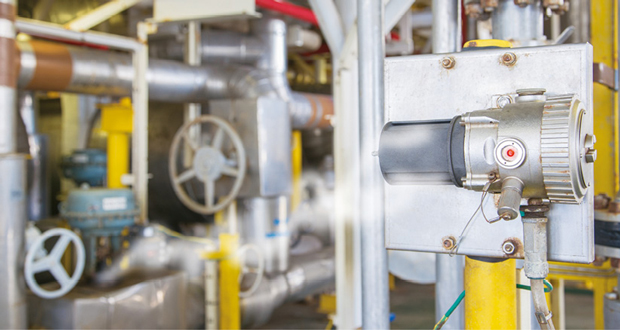Chris Gunn, Sales & Marketing Director at EnviroLogik, explains the benefits of IoT smart building systems in monitoring heating, ventilation, air conditioning and refrigeration (HVACR) equipment
Refrigerant leaks are a common occurrence, whether it’s from a supermarket pack, walk-in freezer or air conditioning system, and if it’s been picked up by an expensive third-party external leak detection system, then the leak has already occurred and the refrigerant has been lost.
However, most sites don’t have these alert systems for when a leak has occurred. On non-manned sites, even a small leak left undetected can lead to an entire system leak and the loss of all refrigerant charge. A tool like the EnviroLogik IoT refrigerant pressure monitoring system, which was installed in collaboration with Polyteck Building Services on one of their sites; can pick up even very small leaks and alerts contractors and management instantly so that corrective action can be taken quickly to repair the leak and minimise the issue.
Building management systems have existed for some time but have traditionally not been connected remotely, requiring the physical presence of a specialist to make adjustments. Now we’re in an age where smart building technology allows us to monitor changes online to optimise performance using the ‘Internet of Things’ (IoT). Small, battery-powered smart IoT devices can be located quickly and easily without expensive hard wiring and can provide data to external BMS systems via an API interface or Modbus unit.
BENEFITS OF IOT SMART BUILDING SYSTEMS
Cost savings from preventative maintenance
Refrigerant leaks from heating, ventilation, air conditioning and refrigeration (HVACR) equipment are expensive. If left unchecked, a leak from a chiller can easily cost £5,000. To put it into context, a twin circuit air-cooled 780Kw chiller operating on R134A will have a typical refrigerant charge of 100Kg and costs around £2,800 to replace. If there is a subsequent compressor failure, this can easily amount to an additional £10,000. IoT systems can offer facilities managers an early warning of impending equipment failure, and given that energy costs are already increasing across the board, facilities managers can ill afford additional expenditure that is entirely preventable.
Meanwhile, small battery-powered water leak sensors can detect leaking sinks, urinals and toilet cisterns, saving thousands from damage to equipment and occupiers below. The smart systems can either shut off a local water valve or alert site teams so that they can manually shut valves off.
Live monitoring
IoT sensors can monitor mechanical and electrical equipment system pressures live on each circuit. Attaching to the system’s service valves, these battery-powered pressure transducers are set up with low- and high-pressure thresholds depending on the refrigerant being used. Should a low-pressure threshold be exceeded, an alert is sent by SMS and email to service providers and building management so that action can be taken to minimise any refrigerant losses.
Full insight and access
The system uses a private LoRaWAN (Long Range Wide Area) network that communicates through sub-basement and roof plant room slabs and walls and provides remote monitoring using a secure mobile network. Systems can be monitored from any smart device by security guards, facilities managers and external contractors, removing the need for manual compliance checks. Crucially, it does not need to connect to any building infrastructure, such as ethernet or WiFi, and simply connects between devices using a private RF network and a cellular gateway. All data can be accessed via a customised, web-based dashboard.
The ability for tenants to self-monitor
The systems can also provide individual tenants of multi-tenanted buildings the ability to monitor their own heating, cooling, electric and water consumption so they can validate any bills they receive.
Better working conditions
Smoke detector-sized sensors can monitor multiple indoor air quality conditions, including CO, CO2, as well as volatile organic compounds (VOCs), humidity and PM2.5. This data can be shared with occupants or be displayed on screens at building entrances.
Better efficiency and client satisfaction
Smart building systems enable service teams to remotely diagnose failing systems and respond more quickly, allowing them to potentially fix problems before occupants are affected, minimising disruption and complaints. It also means they can prioritise jobs and send the right technician with the right parts, meaning less time on site.
Reduced carbon emissions
Saving food waste and preventing lost sales are another benefit of preventing refrigerant loss, and smart systems can also support FM businesses to monitor and reduce their carbon output. With the UK’s target of net zero by 2050, it’s important to note that 80 per cent of the buildings that will exist in 2050 have already been built, so it makes sense to identify savings from that existing building stock.
Reduced energy consumption
Part of reducing emissions is matching usage to actual occupancy. For example, if an office is empty on a Friday afternoon, managers can receive a notification to turn off all the lights in that room, something that can be done remotely – saving energy, money and emissions. For even greater savings, HVAC equipment can also be controlled to only service those areas that are occupied, rather than an entire floor.





